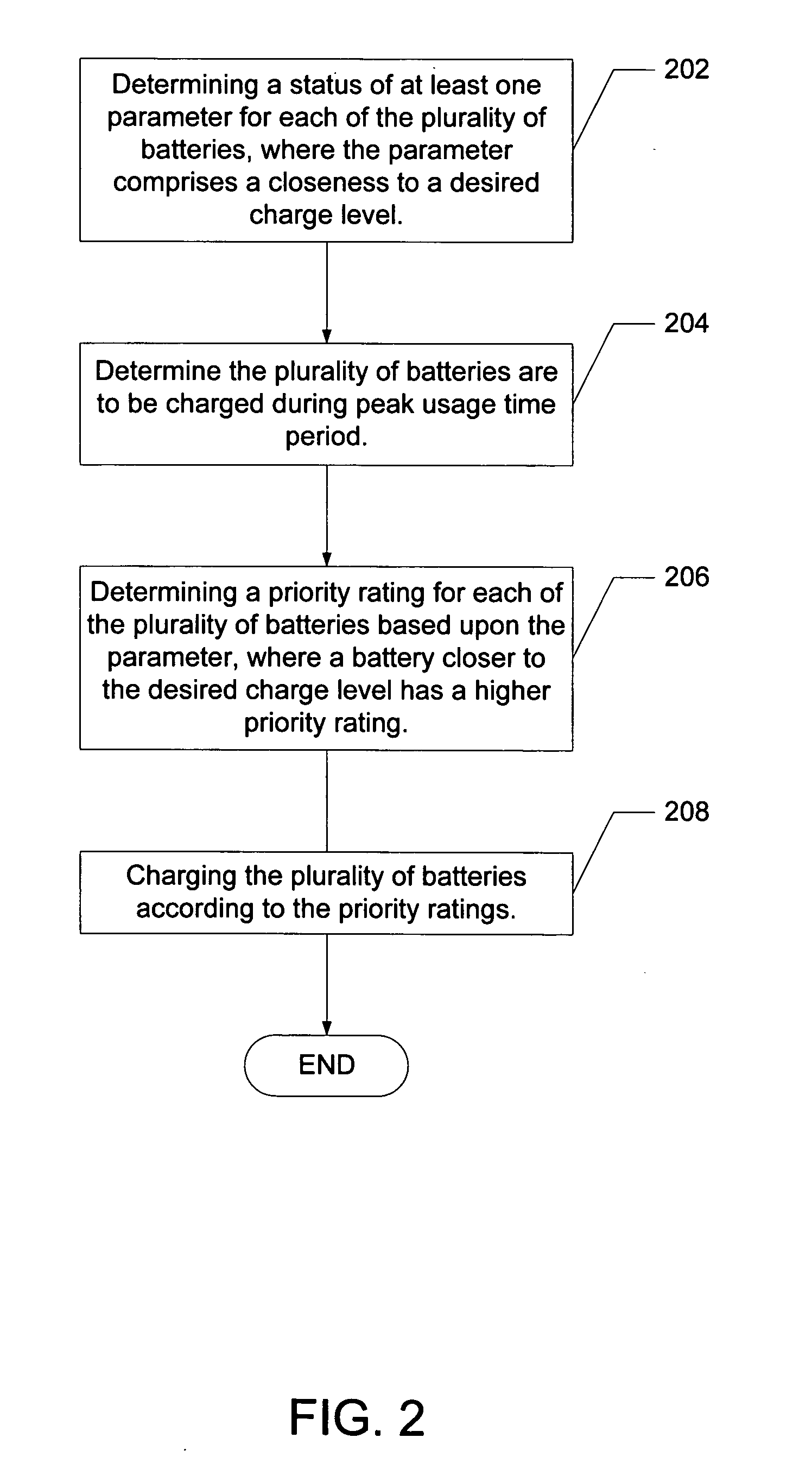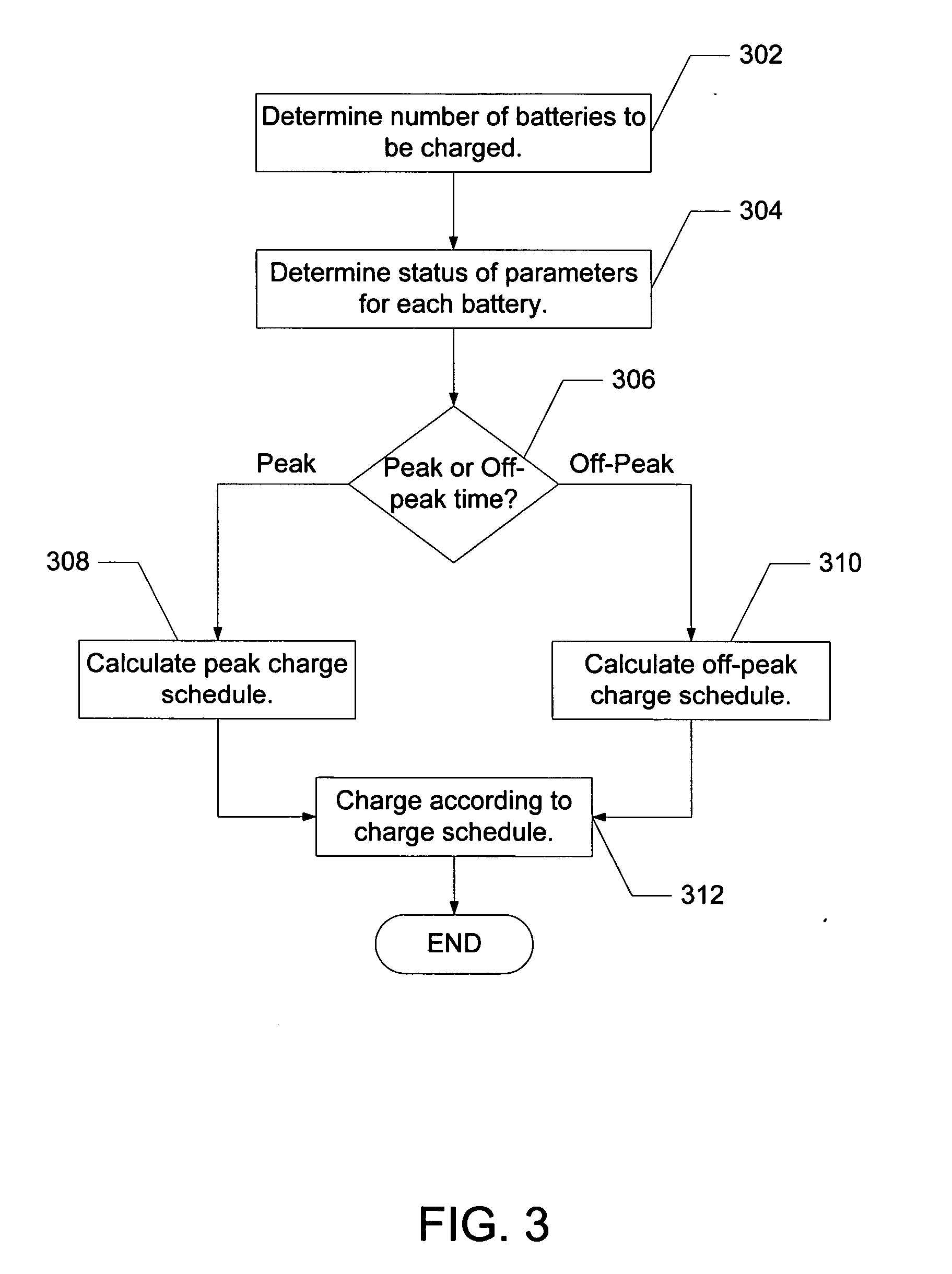Intelligent multiple battery charging station
a charging station and intelligent technology, applied in the field of intelligent charging of multiple batteries, can solve the problems of limiting the time they can power a device, affecting the life of the battery, and affecting the battery, and achieve the effect of higher priority rating
- Summary
- Abstract
- Description
- Claims
- Application Information
AI Technical Summary
Benefits of technology
Problems solved by technology
Method used
Image
Examples
Embodiment Construction
[0015] The present invention provides an improved method for multiple battery charge control. The following description is presented to enable one of ordinary skill in the art to make and use the invention and is provided in the context of a patent application and its requirements. Various modifications to the preferred embodiment will be readily apparent to those skilled in the art and the generic principles herein may be applied to other embodiments. Thus, the present invention is not intended to be limited to the embodiment shown but is to be accorded the widest scope consistent with the principles and features described herein.
[0016] In the method in accordance with the present invention, when a plurality of batteries are to be charged for a peak usage time period, a priority rating for each of the batteries is determined based upon at least one parameter. The parameter comprises a closeness to a desired charge level. A battery closer to the desired charge level is given a high...
PUM
 Login to View More
Login to View More Abstract
Description
Claims
Application Information
 Login to View More
Login to View More - R&D
- Intellectual Property
- Life Sciences
- Materials
- Tech Scout
- Unparalleled Data Quality
- Higher Quality Content
- 60% Fewer Hallucinations
Browse by: Latest US Patents, China's latest patents, Technical Efficacy Thesaurus, Application Domain, Technology Topic, Popular Technical Reports.
© 2025 PatSnap. All rights reserved.Legal|Privacy policy|Modern Slavery Act Transparency Statement|Sitemap|About US| Contact US: help@patsnap.com



